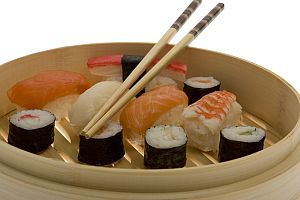Most adults probably know that we need to watch our sodium intake in order to reduce the risk of high blood pressure and heart disease. However, sodium is harder to avoid than you might think. That’s because the typical Western diet includes a lot of processed and prepared foods, most of which contain a great deal of salt. If fact, approximately 90% of our daily sodium intake comes from these kinds of foods. Only 10% of the salt we consume is the direct result of salt being added as seasoning during cooking or while sitting at the table. This means that reducing the amount of processed and prepared foods in our diet is really the key to taking control of our sodium intake. However, once you take control, it becomes very important to have seasoning alternatives to traditional table salt. Let’s talk about “why” and then about “how”.
Excess intake of sodium chloride raises the risk of stroke and heart attack. However, studies have also shown that LOW salt diets can also increase your risk of dying from a heart attack or stroke. So the best advice available at the moment is to keep sodium chloride levels down to a reasonable level and eating the right KIND of salt. The trouble for most of us is that our taste buds get in the way. The simple truth is that our tastes have been shaped by our diet, which (for most Americans) tends to be heavy on fat, sugar and salt. When these things are reduced or absent, our food tastes bland to us unless some other flavor picks up the slack—even when we cook everything from scratch. So what’s to be done?
Part of the answer is to rethink salt. Typical table salt is 98% sodium chloride and 2% anti-caking material. Other trace elements (the kind found in natural sea salt) are usually removed during processing. But these trace elements—including calcium, potassium and magnesium—are actually important for our health and they add interesting flavors of their own. This is why some nutrition and culinary experts suggest that you use natural, unrefined salt in your salt shaker. This type of salt sometimes goes by names like “Celtic” sea salt or “gray” sea salt. The gray color indicates that the salt has not been bleached and stripped of other minerals. It usually tastes a lot better too, providing a richer and fuller flavor to your foods and allowing you to use less of it to achieve the same effect.
What about so-called “salt substitutes”? For the most part, these have been shown to fall short of the mark in terms of flavor. Consumer Reports conducted a blind taste test of four different commercial salt alternatives, almost all of which tasted metallic, bitter, or had an unpleasant aftertaste. The exception was Diamond Crystal Salt Sense, which tasted nearly like salt, and had about a third less sodium than table salt.
If you want to remove the salt shaker entirely from the dinner table, however, there are a few alternatives for adding flavor without the sodium. Perhaps the most healthy and flavorful of the salt alternatives is kelp flakes. Because kelp is a sea vegetable, the flakes not only impart a salty flavor, but they also provide a lot of minerals, particularly iodine, which has been added to common table salt for years to reduce thyroid disease. Kelp has naturally occurring iodine, in addition to folate, calcium, iron, magnesium, potassium, phosphorus and vitamin K. If you have thyroid problems, however, be sure to consult with your doctor before using kelp flakes.
Other tasty alternatives to using table salt in your cooking are garlic (try roasting a few cloves drizzled with olive oil in the oven for 30 minutes, then blending it into potatoes, pasta, etc. for an almost sweet, nutty flavor), herbs and spices. These can add considerable flavor without adding sodium.

